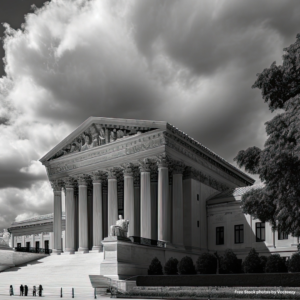MBA Essays 2025-26: Complete Guide to Writing & Deadlines
August 24, 2025
Read MoreAugust 4, 2023

On June 29th the United States Supreme Court released opinions on two highly charged cases brought by Students for Fair Admissions, challenging the affirmative action policies at Harvard University and the University of North Carolina. The court ruled 6-3 that race-based admissions, which have been practiced since 1978, violate the Equal Protections Clause of the 14th Amendment. The ruling prohibits considering race as a factor in the holistic admissions process.
In response to the ruling, Harvard and UNC expressed their commitment to diversity and inclusivity in their student populations. However, the decision’s full impact on business schools and universities remains uncertain. Schools like Northwestern’s Kellogg School of Management and Dartmouth’s Tuck School of Business affirmed their dedication to fostering diverse and inclusive communities despite the ruling.
Paul Bodine, Admitify’s Founder and President, expressed concerns that outlawing affirmative action without addressing other preferential treatments, such as legacy admissions and favoring affluent families, may exacerbate inequities in the admissions process. He pointed out that universities like the University of California and the University of Michigan, which discontinued affirmative action, struggled to create student populations that reflected U.S. demographics. He fears that the decision may hinder business schools’ progress in achieving gender parity and diversity.
Overall, the ruling’s impact on admissions processes and diversity initiatives in universities and business schools remains uncertain, and schools must now consider alternative approaches to ensure diverse and inclusive student populations. For more on this, make sure to read Marc Ethier’s article in Poets & Quants.
The ruling has also led to speculations about the potential demise of diversity and inclusion efforts in the workplace. However, a Harvard Business Review article by Kenji Yoshino and David Glasgow contends that there are still viable pathways for advancing diversity despite the ruling. While the court’s decision primarily focused on governmental actors and universities, private employers may also face future challenges regarding the consideration of protected characteristics. This could jeopardize aggressive pro-diversity policies such as preferential hiring and strict demographic targets.
Nonetheless, the article identifies three types of diversity and inclusion initiatives that can persist under the court’s decision. Firstly, “debiasing work” involves implementing measures to reduce bias in hiring and promotions, such as using structured interviews and transparent, merit-based processes. Secondly, “ambient work” comprises broader initiatives that create inclusive environments, like outreach programs, employee resource groups, mentorship schemes, and family-friendly policies.
The third approach, “universal work,” adopts diversity and inclusion frameworks that benefit all employees, regardless of background. This might involve promoting allyship, fostering authenticity, and enhancing psychological safety in the workplace. These strategies remain legally sound even in a more conservative legal landscape by focusing on universal benefits rather than specific demographic considerations.
Despite a cultural backlash against diversity efforts, the article emphasizes that promoting inclusivity remains essential and lawful. Businesses can still strive for diverse and inclusive workplaces if they refrain from using protected characteristics in concrete employment decisions. Such initiatives are not just ideals but are necessary for fostering innovation, productivity, and employee engagement, especially amid ongoing demographic and social changes.